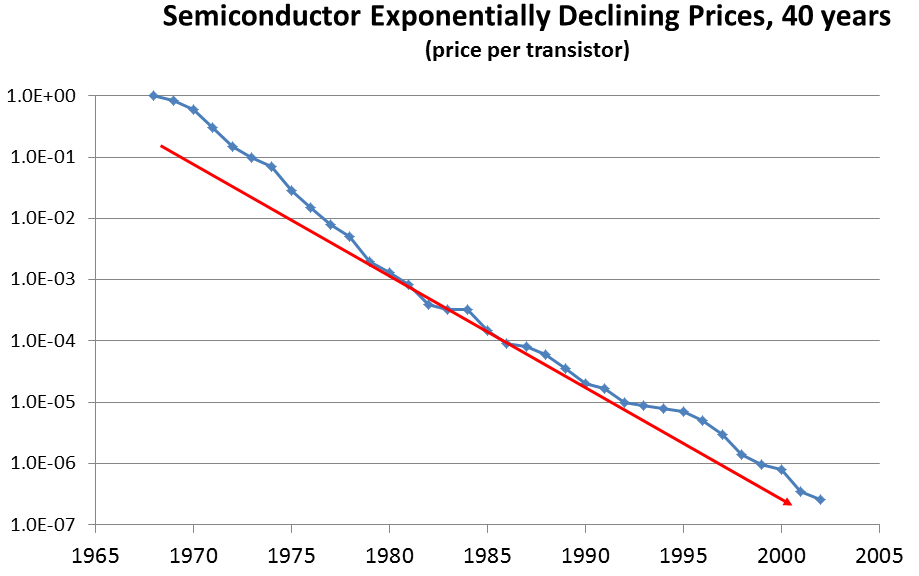The Semiconductor Laser's Cost Curve
Cost and Performance: All-Semiconductor and Moore’s Law |
|---|
|
In 1965, Gordon Moore, then head of Intel, predicted that the density of transistors on a semiconductor would double every 18 months. The result would be a reduction in the cost of semiconductor-based computing that would continue for the foreseeable future. Moore’s Law, as it came be known, has been predicted to end every few years, and yet it is still true after 45 years. Due to Moore's Law, the cost of the Insight laser is already low, and cost will decline rapidly over time. |
|
Moore's Law has applied for 45 years, leading to rapid inceases
|
|
Since the invention of the semiconductor, virtually all segments of the electronics industry have migrated from older technologies to all-semiconductor. The increase in performance, linked to substantial reduction in cost, have overwhelmed every other competing technology. In the non-tunable laser business, this has been true for the last couple decades. More and more, older laser technologies have succumbed to the performance and cost advantage of all-semiconductor solutions. In the case of a sweeping laser, the advantage of all semi-conductor is even larger, because in addition to the normal performance and price advantage that occur with volume, the lack of any movement in the tuning mechanism brings with it a number of important other advantages, including speed, controllability, eliminating external k-clocks, and random access. Within just several years, an Insight akinetic all-semiconductor swept laser will cost well below $2,000 US. This is a fraction of the present cost of swept lasers. The performance of this laser will be substantially above the performance of traditional kinetic lasers, even those with integrated MEMs technology (MEMs does not eliminate movement, nor does it likely to eliminate the need for external pump lasers, circulators, or external SOA amplifiers). |
|
A single 3-inch wafer |
All-Semiconductor History |
|
|---|---|
| Monolithic tunable lasers have a long history in telecom and a recent history in OCT. | |
|
|




